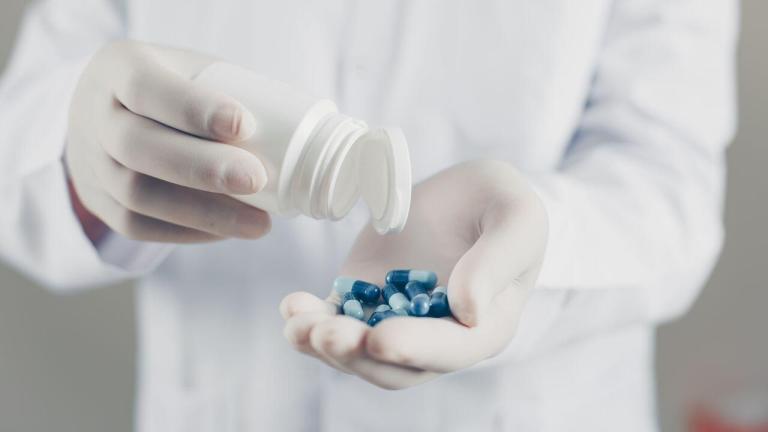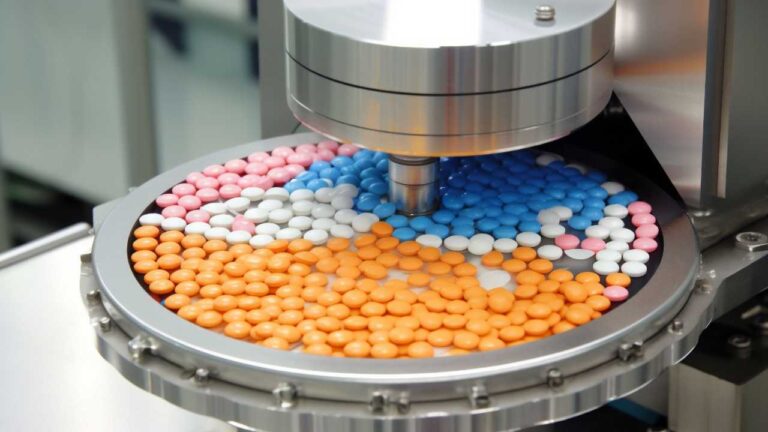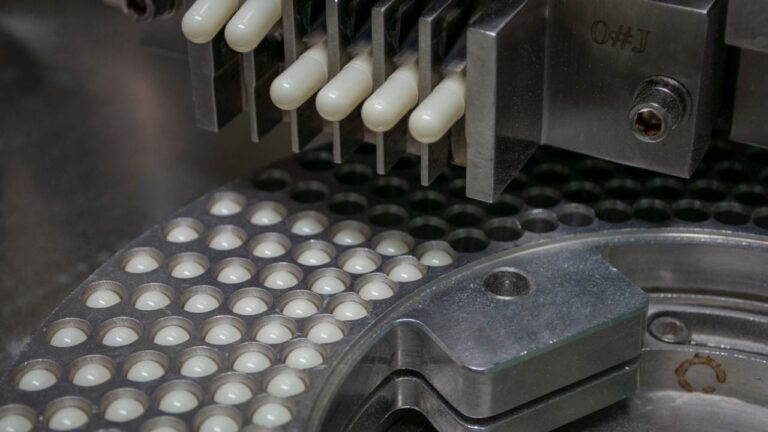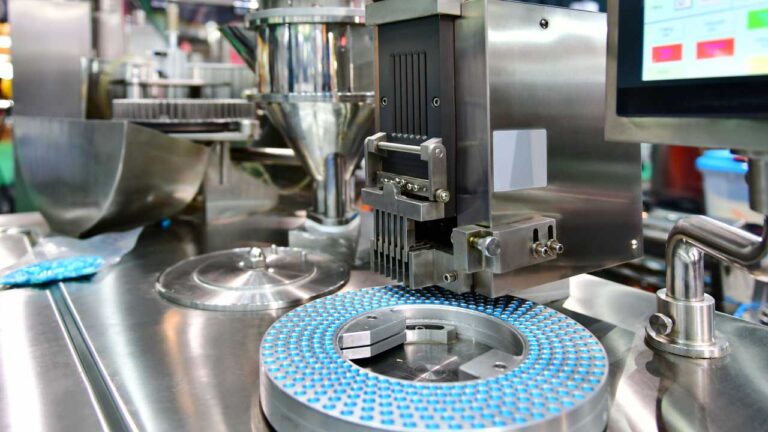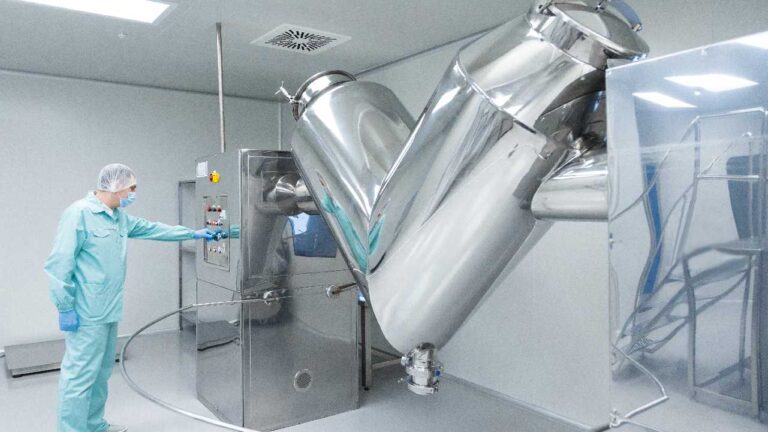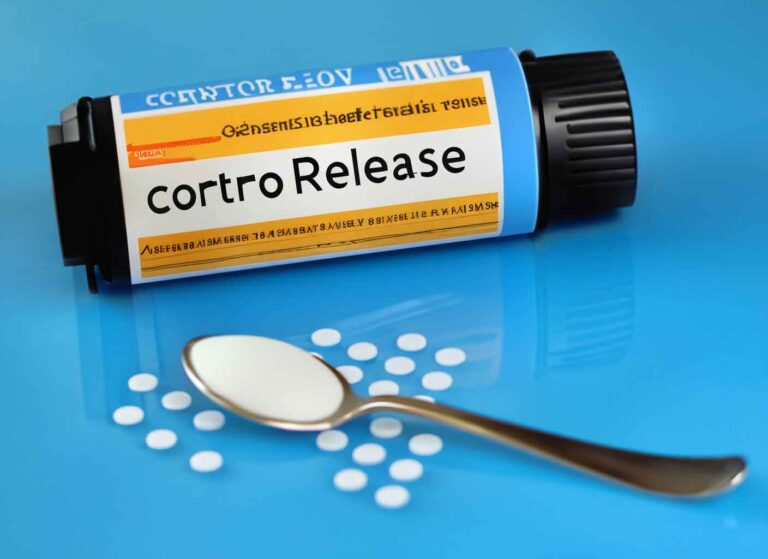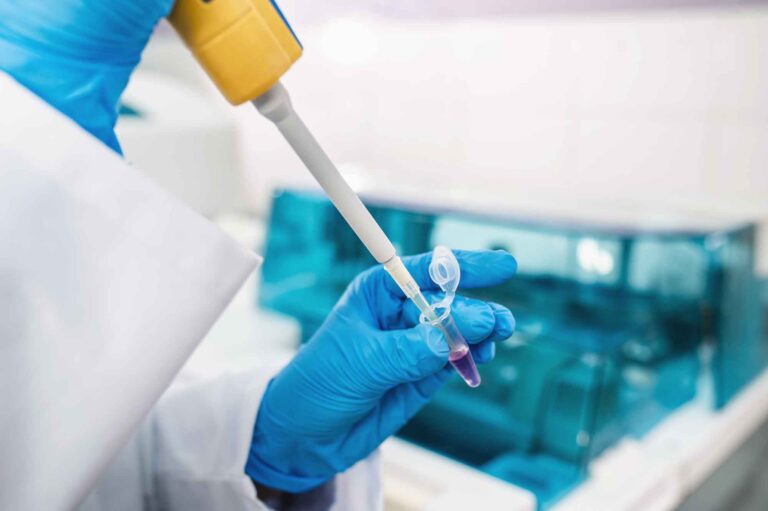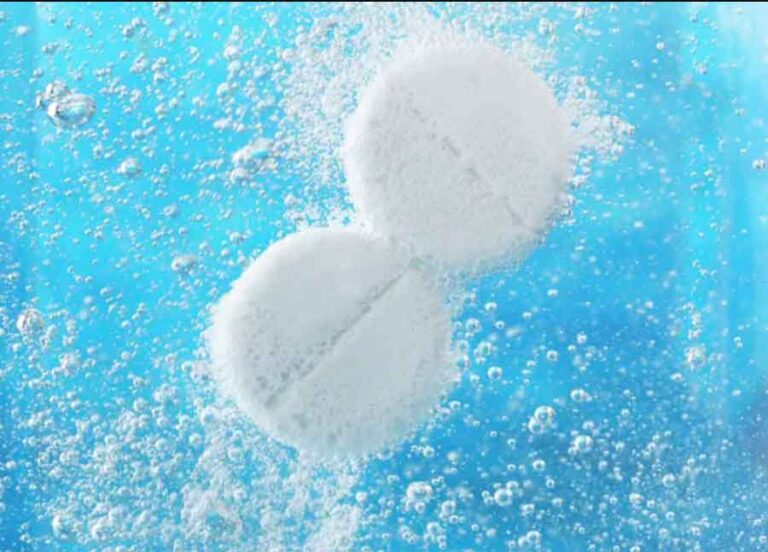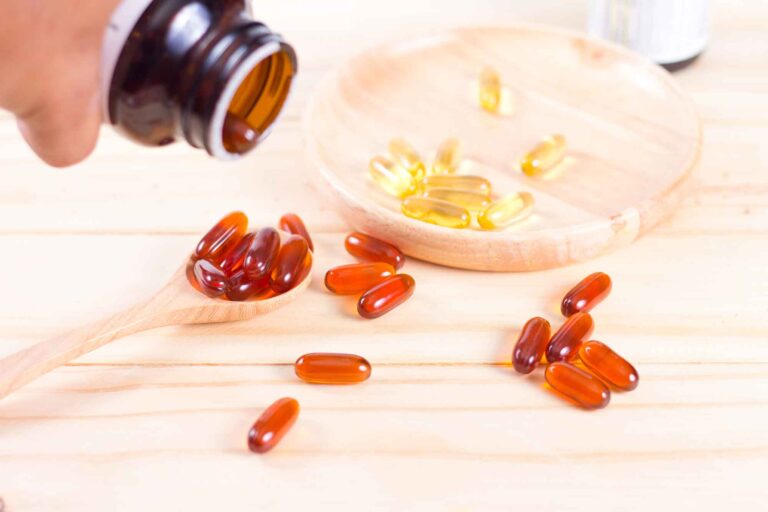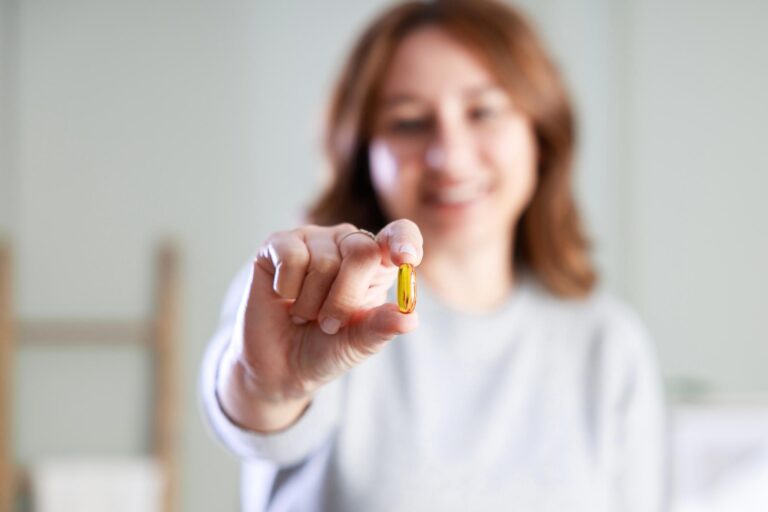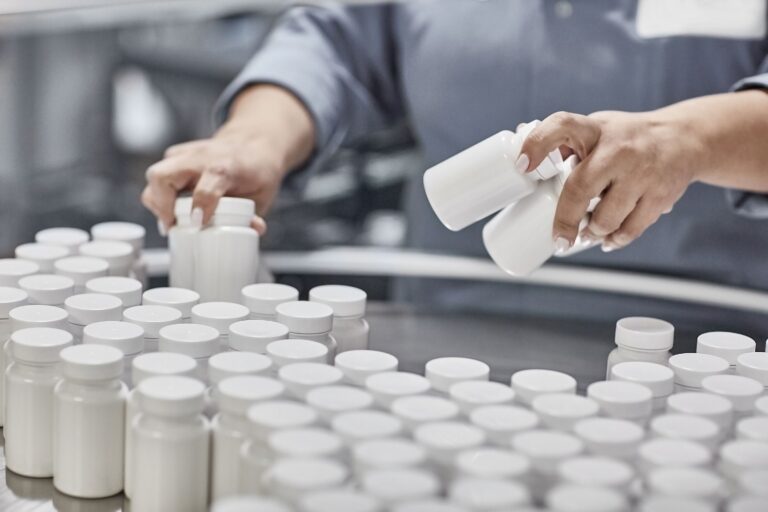Injectables, also known as parenteral preparations, are a class of sterile pharmaceutical products designed for administration into the human body. These preparations bypass the digestive system and deliver medication directly into the bloodstream or target tissues. Parenteral preparations are unique because they bypass the body’s primary protective systems, such as the skin and mucous membranes. This gives them several advantages, including various routes of administration, elimination of the first-pass effect, and improved absorption.
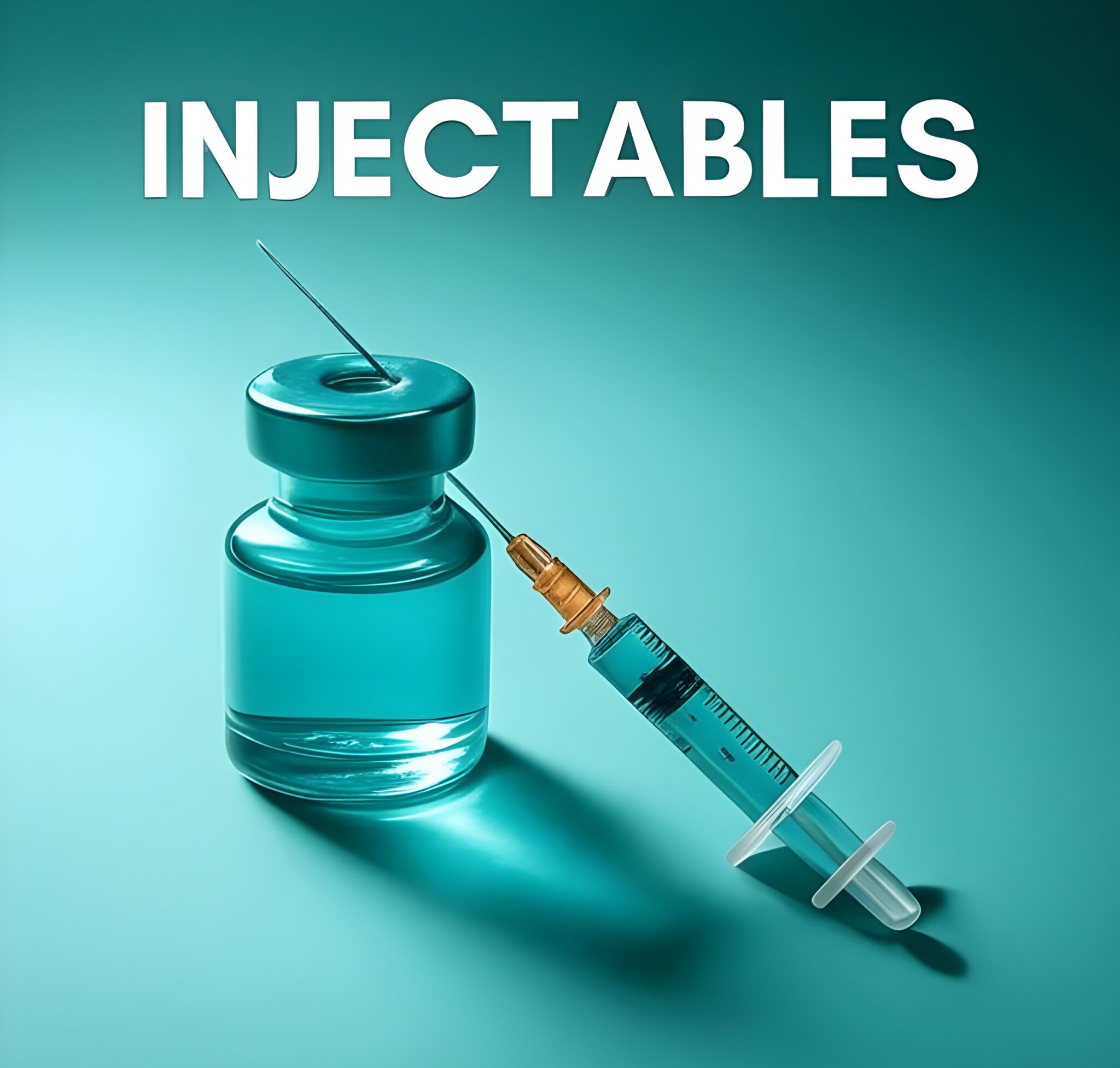
Routes of Administration
- Intravenous (IV): Directly into the bloodstream for immediate effect.
- Intramuscular (IM): Into the muscle tissue for a slower, more prolonged release.
- Intrathecal (around the spinal cord): This route administers a drug within the vertebral column to bypass the blood-brain barrier.
- Subcutaneous (SC): Under the skin for consistent absorption over time.
Controlled Delivery:
- Infusions: For continuous or intermittent drug delivery, often using a pump.
- Implantation: For long-term, steady release of medication from an implant.
Injectable Dosage forms
There are four main dosage forms used with injectables:
Solutions: A prevalent form for injectables, solutions are often water-based but may also incorporate other solvents like glycols or alcohol to dissolve the medication.
Suspensions: These are complex to formulate for parenteral use. Achieving a stable suspension that remains evenly distributed and can pass through needles as fine as 18 to 21 gauge over its entire shelf life involves careful manipulation of various factors.
Emulsions: Comprising a mix of two liquids that typically don’t blend, emulsions require careful stabilization. However, the choice of stabilizers and emulsifiers is limited, and the potential for adverse reactions further restricts the use of emulsions for intravenous delivery.
Dry Powders: For drugs that degrade in liquid form, dry powders offer a viable alternative. These are supplied as powders and reconstituted with sterile water just before they are administered to the patient.
pH of Parenterals
The target pH of drug formulations should ideally be as close as possible to the physiological pH. For different types of injections, the acceptable pH range varies. For instance, for intravenous (IV) and intramuscular injections, the acceptable pH range is 2–11, while for subcutaneous injections, due to potential irritation issues, the acceptable pH range is 4-9.
To achieve an ideal pH range of 5-8, a buffer such as acetate, phosphate, citrate, histidine, or TRIS can be used. However, it’s important to minimize the buffer capacity so that the body fluid can quickly adjust to the formulation pH, thereby preventing irritation at the injection site.
In the case of IV infusions, the solution pH is typically controlled by the salt form of the drug or by acids and bases without a buffer, considering in vivo tolerability. Sometimes, a balance between the solubility and stability of the drug substance may need to be struck to find a target formulation pH where both drug loading and product stability are acceptable.
For large volume preparations greater than 100, it’s recommended not to contain a pH buffer. This is because the blood itself has a property that acts like a buffer and may compete with the injected drug product if a buffer is added. This is a crucial consideration to ensure the effectiveness and safety of the parenteral product.
parenteral preparation
When it comes to the equipment used in parenteral preparation, it’s crucial that the devices are sterile, pyrogen-free, and free of particulate matter. There are several options for administering parenteral drugs, depending on the type of drug, patient, and dosage. These include:
- Syringes & Needles: These sterile devices are used to inject solutions into the body. The syringe is a calibrated glass or plastic cylinder with a plunger at one end and an opening to which the needle attaches. Syringe sizes vary from 0.25 ml to 450 ml and can be made from glass or assorted plastics.
- Cannulas: A cannula is a thin tube inserted into a body cavity, such as the nose, or a vein. In addition to administering medication, cannulas are used to drain fluid or provide oxygen. There are 11 types of cannulas to meet specific conditions.
- Catheter: For parenteral nutrition, a dedicated tube called a central venous catheter is placed in a main vein. The catheter tip is inserted near the heart.
- Feeding tube: This is a medical device usually made of polyurethane or silicone used to provide nutrition to patients unable to swallow. Placement may be temporary to treat acute conditions or lifelong in the case of chronic disabilities.
The manufacturing process of parenteral preparations is complex and involves a series of steps from formulation development to first-in-man studies. Due to the fast-acting nature of parenteral administration routes, associated drug formulations must meet stricter compliance regulations to ensure patient safety. They must adhere to specific parameters to obtain approval from regulatory bodies. As a result, Contract Development and Manufacturing Organizations (CDMOs) must establish and adhere to a comprehensive approach, and be experts in sterile containment, fill/finish, and data-driven manufacturing and control processes. The parenteral drug manufacturing process includes compounding, mixing, filtration, filling, terminal sterilization, lyophilization, closing, sealing, sorting, inspection, labeling, and final packaging.
Expertise In Injectable & Parenteral Drug Development
Formulation Development for Parenteral Products
Our expertise in parenteral formulation development is comprehensive, ensuring that every injectable we produce meets the highest standards of quality and efficacy. We focus on:
- Excipient Compatibility: Critical for the stability and safety of parenteral formulations, we meticulously test how excipients interact with the active pharmaceutical ingredients (APIs) in injectables.
- Clinical Batch Manufacturing: Leveraging cutting-edge technology, we manufacture clinical batches of injectables that are consistent and reliable.
- Analytical Methods Development: Our analytical methods for parenteral products are robust, ensuring precise quantification and characterization of APIs in injectables.
- Clinical Phase Appropriate Validation: We validate our analytical methods at every phase of clinical development, tailoring our approach to the specific needs of parenteral formulations.
- Stability Studies: Long-term and accelerated stability studies are essential for injectables, confirming that they maintain their integrity throughout their shelf life.
Compendial Standards for Parenteral Preparations
Our parenteral preparations meet all compendial criteria, including:
- Sterility: We adhere to stringent aseptic processes to ensure our injectables are free from microbial contamination.
- Pyrogen-Free: Our rigorous testing protocols confirm that our parenteral products are devoid of pyrogens, safeguarding patient health.
- Particle Analysis: We guarantee that our injectables are clear, free from visible particles, and have a uniform particle size distribution for suspensions and emulsions.
Biocompatible Excipients in Parenteral Formulations
- Functionality: We choose excipients that enhance the performance of injectables, such as adjusting osmolarity or stabilizing the API.
- Safety: Our parenteral products contain only the necessary amount of excipients, minimizing the risk of adverse reactions.
Innovative Drug Delivery with Parenteral Technologies
We use the power of nanotechnology and lipid based drug delivery systems to create safe, bioavailabile targeted formulations.
- Nanotechnology Applications: Our injectables may include advanced delivery vehicles like liposomes and polymeric micelles, enhancing the targeted delivery of medication.
- Targeted and Sustained Release: We develop parenteral formulations that provide controlled release, ensuring a consistent therapeutic effect and improved patient compliance
Expertise In Injectable & Parenteral Drug Development
Formulation Development for Parenteral Products
Our expertise in parenteral formulation development is comprehensive, ensuring that every injectable we produce meets the highest standards of quality and efficacy. We focus on:
- Excipient Compatibility: Critical for the stability and safety of parenteral formulations, we meticulously test how excipients interact with the active pharmaceutical ingredients (APIs) in injectables.
- Clinical Batch Manufacturing: Leveraging cutting-edge technology, we manufacture clinical batches of injectables that are consistent and reliable.
- Analytical Methods Development: Our analytical methods for parenteral products are robust, ensuring precise quantification and characterization of APIs in injectables.
- Clinical Phase Appropriate Validation: We validate our analytical methods at every phase of clinical development, tailoring our approach to the specific needs of parenteral formulations.
- Stability Studies: Long-term and accelerated stability studies are essential for injectables, confirming that they maintain their integrity throughout their shelf life.
Compendial Standards for Parenteral Preparations
Our parenteral preparations meet all compendial criteria, including:
- Sterility: We adhere to stringent aseptic processes to ensure our injectables are free from microbial contamination.
- Pyrogen-Free: Our rigorous testing protocols confirm that our parenteral products are devoid of pyrogens, safeguarding patient health.
- Particle Analysis: We guarantee that our injectables are clear, free from visible particles, and have a uniform particle size distribution for suspensions and emulsions.
Biocompatible Excipients in Parenteral Formulations
- Functionality: We choose excipients that enhance the performance of injectables, such as adjusting osmolarity or stabilizing the API.
- Safety: Our parenteral products contain only the necessary amount of excipients, minimizing the risk of adverse reactions.
Innovative Drug Delivery with Parenteral Technologies
We use the power of nanotechnology and lipid based drug delivery systems to create safe, bioavailabile targeted formulations.
- Nanotechnology Applications: Our injectables may include advanced delivery vehicles like liposomes and polymeric micelles, enhancing the targeted delivery of medication.
- Targeted and Sustained Release: We develop parenteral formulations that provide controlled release, ensuring a consistent therapeutic effect and improved patient compliance
Solutions for Long Acting Injectables
Long-acting injectables are a cornerstone in treatments that require sustained medication delivery. These formulations ensure consistent therapeutic effects, which is crucial for patient adherence to long-term therapy. They are commonly used for:
- Contraception
- Psychiatric disorders
- Immunodeficiencies
How They Work:
Long-acting injectables typically contain the active pharmaceutical ingredient (API) in:
- Oil-based solutions or suspensions:These solutions enhance drug solubility and prolong medication release.
- Microfine watery suspensions: Commonly used for steroid depots.
- Solid matrices: These allow the API to be released slowly over time.
The Role of Nanotechnology:
The use of nanotechnology has revolutionized long-acting injectables by:
- Enhancing solubility: Poorly soluble molecules are now easier to integrate into formulations.
- Controlling release: Nanosizing the drug particles allows precise control over their release into the body.
- Increasing dosage: Nanoparticles enable a higher dose of medication to be packed into a smaller volume.
- Improving stability: More uniform particle sizes and the use of surfactants contribute to the physical stability of the formulation.
By leveraging these advanced techniques, long-acting injectables can deliver medication efficiently, ensuring that patients receive the right dose at the right time. We understand that every active pharmaceutical ingredient (API) is unique. Our team customizes the development process to address specific challenges. Our expertise extends to handling challenging parenteral formulations, including those with limited solubility or stability issues.
Targeted Delivery: We design systems for precise drug delivery, aiming to minimize side effects and maximize therapeutic impact.
Controlled Release: Our controlled release formulations provide sustained drug release, which is key to enhancing patient adherence and treatment outcomes.
Solubility Enhancement: We apply innovative techniques to improve the solubility of poorly water-soluble drugs, ensuring effective delivery.
Stability Optimization: Our strategies are focused on extending the shelf-life and maintaining the therapeutic effectiveness of sensitive APIs.
Quality by Design (QbD) Framework
Quality is not an afterthought; it’s embedded in our approach. We follow the Quality by Design (QbD) principles throughout the lifecycle of your project.
By identifying critical process parameters, we proactively manage risks and maintain consistent quality. Our goal is to deliver injectable products that exceed expectations.
Related Services
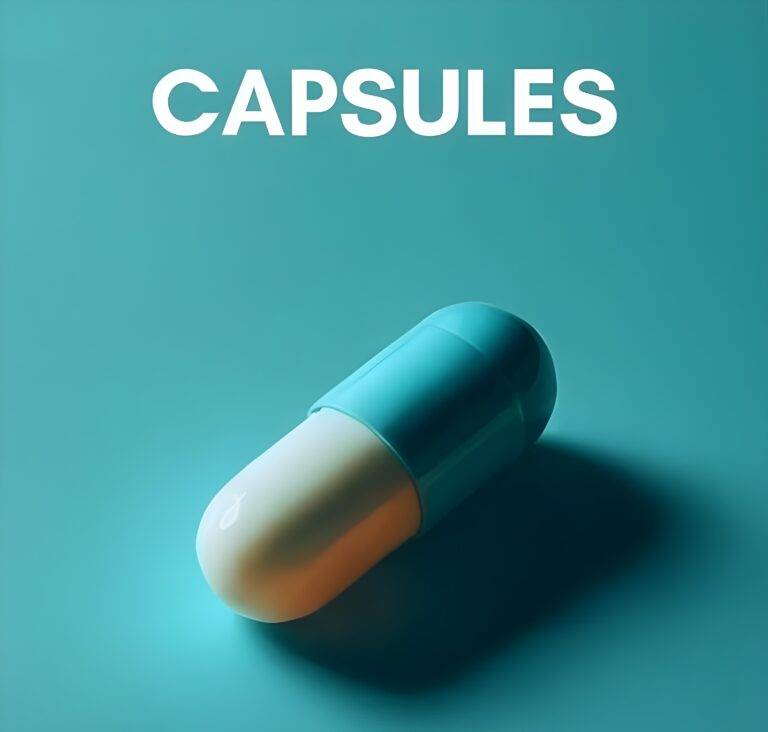
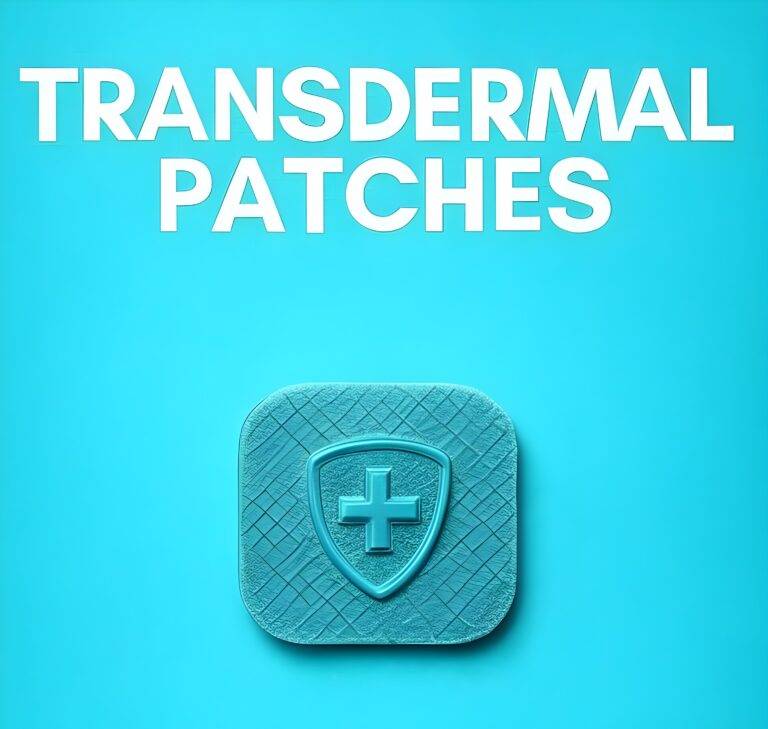


FAQs
Here are some frequently asked questions about Injectables/Parenterals.
Key considerations include the CDMO’s expertise in complex parenteral delivery technologies, formulation development, manufacturing, and filling services. It’s important to ensure they have experience with highly potent APIs and controlled substances, and can support your product from feasibility studies to commercial scale production.
Hycon offer a range of parenteral drug delivery technologies, such as microparticles, nanoparticles, and more. These technologies can be customized to meet specific drug, formulation, and application requirements, ensuring the desired release profile.
We ensure quality and safety through Quality by Design (QbD) and process characterization principles. These principles help control critical process parameters throughout the development, scale-up, and optimization of the manufacturing process for clinical and commercial supply.
Specialized expertise is crucial due to the technical demands of aseptic fill-finish processes, requiring specialized facilities, technologies, knowledge, and training to ensure that injectable medications meet the highest quality standards.
Yes, Hycon supports the aseptic filling of injectables/parenterals in various forms, including liquids, suspensions, and powders into vials, handling a range of batch sizes and meeting stringent quality standards.
We use a comprehensive range of analytical methods and tests, including formulation characterization and validation to ICH guidelines, to maintain the integrity and efficacy of the drug throughout its lifecycle.
Hycon uses ISO 5 (Grade A) isolators during the aseptic filling process to handle highly potent or specialized parenteral products safely and maintain drug product sterility.
Diafiltration system is essential for the purification and stabilization of drug products, especially for drugs that require precise dosing and extended shelf-life, crucial for clinical and commercial scale production.




